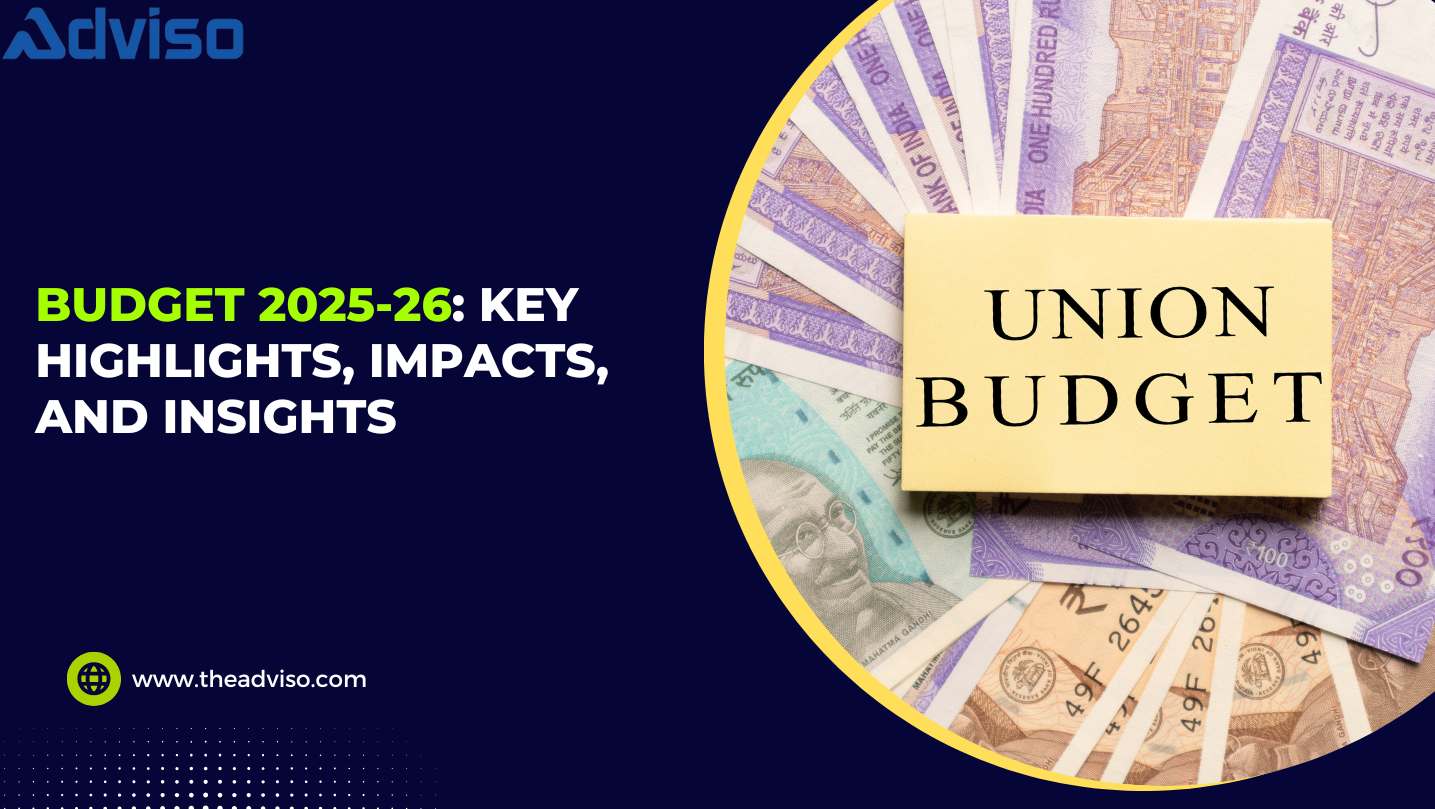Budget 2025-26
While the previous budget seems fairly capable on paper, it has many loose ends according to experts. These include stringent taxes, impractical incentives for MSMEs, feeble credit facilitation, stern duty on life-saving drugs, so on and so forth. Nevertheless, the recently introduced Budget 2025-26, presented by Finance Minister Nirmala Sitharaman, emerged as a huge relief for many, especially salaried individuals, small industries, startups, healthcare, and farmers. Let’s delve into what this budget has to offer and whether it will be able to reshape the struggling sectors.
Economic Growth and Fiscal Policy
Financial Consolidation
Budget 2025-26 has a lot to offer to solidify the nation’s economy. The government with the launch of this budget is expecting the following numbers, which seemingly add to the growth.
- The total receipts are projected at Rs 34.96 lakh crore.
- Meanwhile, the total expenditure is expected to be poised at ₹50.65 lakh crore. The net tax receipts are estimated at around ₹28.37 lakh crore.
- The FM has confirmed to keep the fiscal deficit at 4.4% of GDP. The market borrowing to finance this deficit is estimated at Rs.14.82 lakh crore.
Key Fiscal Measures
- While efforts have been made to ease the tax obligations and compliance, the majority of sectors fail to avail of the benefits. The Budget 2025-26 aims to patch this gap by easing the bureaucratic hurdles.
- Another major step involves the promotion of public-private partnerships. This could be a transformative decision as it is expected to give a much-needed thrust to infrastructure projects.
- MSMEs remained the staple of the nation’s growth, contributing nearly 33% of India’s GDP. The Budget 2025-26 aims to support them with much-needed financial aid through seamless credit support.
Check out our stories: Top 7 IRDAI License Services in India
Nominal Taxes (A Much-needed relief for middle-class taxpayers)
With the release of Budget 2025-26, the FM brings delight to most taxpayers, majorly salaried individuals, by ensuring zero taxes up to Rs 12 lakh income. This significant move will boost the disposal income of the taxpayers, enabling greater tax returns via increased purchases. For salaried individuals, this limit is poised at Rs 12.75 lakh due to a standard deduction of Rs 75,000.
Here are the revised tax slabs.
- ₹0-4 lakh: NIL
- ₹4-8 lakh: 5%
- ₹8-12 lakh: 10%
- ₹12-16 lakh: 15%
- ₹16-20 lakh: 20%
- ₹20-24 lakh: 25%
- Above ₹24 lakh: 30%
Notably, the taxpayers shall be taxed as follows under the new regime:
A person earning ₹12 lakh will save ₹80,000 (100% tax-free).
A person earning ₹18 lakh will save ₹70,000 (30% tax reduction).
A person earning ₹25 lakh will save ₹1,10,000 (25% tax reduction).
Agriculture and Rural Development
Prime Minister Dhan-Dhaanya Krishi Yojana
- In an effort to boost the low-yield regions, 100 districts have been selected under Prime Minister Dhan-Dhaanya Krishi Yojana wherein apt resources and credit will be provided to farmers for boosting productivity.
- Also, farmers in these states shall get access to storage facilities at the panchayat and block levels for improved crop protection.
- Through this Yojana, the government is eyeing strategic partnerships with concerned states to elevate agri production, benefiting around 1.7 crores of farmers.
Support for Farmers
Mission for Cotton Productivity- A Brand New Initiative for Cotton Farmers.
The FM has launched the ‘Mission for Cotton Productivity’- 5 years initiative that will place cotton farming on a growth trajectory. The initiative aims to provide cotton farmers with apt credit and technological aid to grow a variety of cotton yields, especially the extra-long staple cotton, helping boost the textile sector. Aligned with the government’s “integrated 5F vision”, this initiative is likely to boost farmers’ income manyfold, ensuring financial propensity.
Kisan Credit Card (KCC) loans – Increased Credit Threshold for Farmers
By providing hassle-free credit on short-term, Kisan Credit Card (KCC) has played a pivotal role in endorsing the well-being of farmers, dairy farmers, and fishermen. The FM has promised to increase the loan limit from 3 to 5 lakhs under the Modified Interest Subvention Scheme for loans availed under KCC.
Urea Plant in Assam
Recognizing the importance of urea in agri production, the government breathed life into three dormant urea plants. To boost production further, the government is all set to open a massive plant in Namrup, Assam with a projected production of 12.7 lakh metric tons.
Rural Infrastructure and Economy
India Post, in tandem with India Post Payment Bank, has reminded a lifeline to millions thanks to a widespread presence, boasting 1.5 lakh rural post offices and 2.4 lakh Dak Sevaks. The government is eyeing to reposition them to benefit the rural areas. Also, India Post will be transformed into a large public logistics organization, upholding the majority of start-ups, MSMEs, women, etc.
MSMEs and Startups (Enhanced Support Under Budget 2025-26)
- Constituting 45% of the nation’s exports, MSMEs’ contribution to India’s growth cannot be overstated. Recognizing their unmatched contribution, the government has decided to revise the MSME classification as follows, paving the way for increased growth.

- The credit guarantee cover is all set to be increased by 2 times, largely benefiting small businesses and startups. The latter belonging to 27 focus sectors will be charged a minimum guarantee fee of 1 percent for loans.
- A term loan of up to 20 crore shall be made available to prolific export facilities led by an MSME.
- The government will roll out bespoke credit cards via the Udhyam Portal with a Rs 5 lakh limit for registered micro-enterprises. The 10 lakhs of such cards shall be made available in the first year.
- The additional Rs 10,000 crore as a FoF shall be made accessible to the startup ecosystem.
- The new incentive will provide a credit worth Rs 2 crore to first-time entrepreneurs, especially women and marginalized groups.
- A focus product scheme will be implemented to boost the production of non-leather quality footwear. The scheme is likely to generate employment for 22 crore individuals, a turnover of Rs 4 lakh crore, and exports of over Rs 1.1 lakh crore.
- To boost the production of high-quality, unique, innovative, and sustainable toys, the government will take the National Action Plan for Toys to the next level by implementing a robust scheme, supporting the manufacturers on all fronts, including production, material procurement, and quality management. Etc.
- With a strong commitment to fulfilling goals under the ‘Purvodaya’, the government will set up an apex institution viz. National Institute of Food Technology, Entrepreneurship, and Management in Bihar, providing an apt boost to food processing activities in the Eastern region, paving the way to increased farmers’ income.
Infrastructure and Investment
- The government has proposed an outlay of Rs 1.5 lakh crores for the 50-year interest-free loan available to states for managing capital expenditure and incentives for reforms.
- The second phase i.e. 2025-30 of the Asset Monetization Plan shall be implemented to make an investment worth Rs 10 lakh crore in new projects.
- The FM has announced the extension of the Mission until 2028 to make potable water accessible to almost 100% of the rural population. The extended outlay shall be launched to support the mission.
Urban Development and Smart Cities
- The government has decided to roll out an Urban Challenge fund worth Rs 1 lakh crore, aiming to elevate city growth and redevelopment.
- Extended support shall be provided to the regional airports and rail connectivity to keep the network intact, making transportation a breeze for travelers.
- UDAN scheme will get the much-needed fillip to amplify air travel accessibility.
Education and Skill Development
Education is the key pillar to the nation’s growth, providing opportunities to tap into innovation in various sectors. To support the sustainable growth of the education sector, the government has come up with notable announcements as follows:
- Establishment of National Centres of Excellence for Skilling in collaboration with global leaders, equipping individuals with competitive skills to cater to modern demand.
- Expansion of prestigious institutes like IITs to address ever-evolving demand for diverse educational programs.
- The addition of 10,000 new medical education seats.
- Plan to equip government schools and health centers with robust broadband connectivity so that they can align with the nation’s initiative of Digital India.
Healthcare and Social Security
- The government has decided to include gig workers (individuals with temporary jobs, like freelancers) in the PM Jan Arogya Yojana.
- The district hospitals shall be equipped with 200 daycare cancer treatment centers.
- National Savings Schemes shall be fine-tuned to render increased benefits to the senior citizens.
Green Energy and Sustainability
- A corpus of Rs 20,000 crore under the Nuclear Energy Mission is proposed for Small Modular Reactors (SMR) to cater to energy consumption.
- To promote green shipping, an outlay of Rs 25000 crores has been announced under the Maritime Development Fund.
FAQs on Budget 2025-26
1. What is the fiscal deficit target for 2025-26?
The government aims to restrict fiscal deficit to 4.4% of GDP.
2. What changes have been made in income tax slabs?
Income up to ₹12 lakh is tax-free, with revised slabs benefiting middle-class taxpayers.
3. How does the budget support MSMEs?
Higher investment limits, credit guarantee expansion, and a Fund of Funds worth ₹10,000 crore.
4. What are the key reforms in agriculture?
New Dhan-Dhaanya Krishi Yojana, increased KCC limits, and Mission for Cotton Productivity.
5. Has GST been changed in this budget?
No major GST rate changes were announced, but compliance has been simplified.
6. What is the Urban Challenge Fund?
A ₹1 lakh crore initiative to modernize Indian cities and enhance urban living standards.
7. Are there any changes in education policies?
Yes, 50,000 Atal Tinkering Labs in schools and increased seats in IITs and medical colleges.
8. What steps are taken for infrastructure growth?
Investment pipelines, higher state capital expenditure, and a ₹10 lakh crore Asset Monetization Plan.
9. What support is given to startups?
Higher credit limits, tax benefits, and a Fund of Funds with ₹10,000 crore allocation.
10. How is green energy promoted?
Nuclear energy expansion, incentives for EV manufacturing, and investment in clean-tech projects.
Conclusion
From minimal taxes, and improved credit facilitation, to amplified support to affected sectors comprising small businesses, Budget 2025-26 seems to hit the right nodes, addressing the areas that matter. Among all the announcements, tax relaxation has emerged to be the most exciting one as it would ease the blow for salaried individuals belonging to the middle-class category. Besides, Budget 2025-26 will bring smiles to farmers and small businesses thanks to the corpus released by the government. The Budget 2025-26 has all the bells and whistles to steer the nation towards the path of unmatched growth.
Also Read: 5 Top Strategies to Improve Business Performance in 2025




